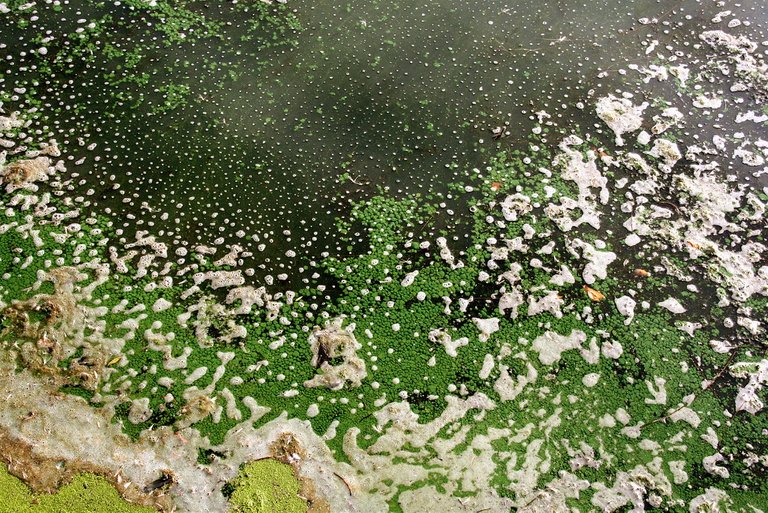Toxic Algal Bloom and its Harmful Impact
Let me give a very quick scenario. A restaurant sells seafood and people love to eat at this restaurant. The restaurant does its due diligence and observes good quality control at their end but one-day people ate mussels and almost all of them had stomach cramps, sweating, and vomiting. If the problem wasn't from the restaurant, then where can this problem arise from? Toxic Algae! That's the one word that scientists found out was the cause of those sicknesses, so what are toxic alga?
Toxic algae refer to harmful algal blooms (HABs) which is as a result of the excessive growth of toxin-producing algae in water bodies. The toxic substances can be dangerous to humans, animals (sea animals and other animals), and the environment. Depending on the excessive algal growth, or algal bloom becomes visible to the naked eye and can be green, blue-green, red, or brown, depending on the type of algae, the algal bloom can be reddish, brownish, greenish, or blue-green. In 2020, according to the center for disease Control, there were 227 harmful algal blooms (HABs) reported from Thirteen states which lead to a total human illness of 95 people and 1,170 animal illnesses. This poison can go up to 60,000 people around the world.
In shellfish, these toxins can range from Amnesic Shellfish Poisoning (ASP), Paralytic Shellfish Poisoning (PSP), and Diarrhetic Shellfish Poisoning (DSP). Since shellfishes are filter feeders, they allow water through their system and filter algae and other food particles from the water where they consume the algae and food particles. These toxins can go through different levels of the food chain and still infect humans. The toxins are produced by alga found in both fresh water and seawater so we should not believe that it is predominant in seawater only. When the alga bloom dies off, they release toxins, and this is because the cell membrane of the alga ruptures releasing the toxin to the water body but it can also be released by living algae cells. Seafood contaminated with these toxins does not show any difference such as in terms of odor and taste, and cooking or freezing does not destroy the toxin. Alga that produces bloom which can be toxic include Anabaena, Nostoc, Nodularia, Lyngbea, Coelosphaerium, Microcystis, Oscillatoria, and Cylindrospermium. The algal toxins produced by Algae include classes such as Neurotoxins, hepatotoxins, Saxitoxins, Lipopolysaccharides, Cylindrospermopsin, Contact Dermatitis, and Microcystins. Paralytic Shellfish Poisoning (PSP) is caused by saxitoxins, Diarrhetic Shellfish Poisoning (DSP) is caused by Okadaic acid and dinaphysis acid, Amnesic Shellfish Poisoning (ASP) is caused by Domoic acid, and Neurotoxic shellfish poisoning (NSP) is caused by brevetoxin.
A study from the University of Wisconsin-Madison have shown that algal bloom can be driven by phosphorus being washed into nearby water body after a heavy rain fall. Phosphorus is an integral ingredient for fertilizers, and when there is a heavy downpour of rain, the phosphorus gets washed into nearby water bodies, causing an increase in algae growth and also an increase in algal bloom. Another chemical/nutrient that can lead to increased algal bloom is nitrogen. Asides this, climate change can lead to an increase in algal bloom. These changes includes change in rainfall, change in salinity, increased carbon dioxide level, sea leve rise, increased water temperature, and coastal upwelling.
If you are in a sea or a lake and you see aslimy algal bloom, you are not sure if it is harmful or not. Asides for eating seafoods that come from algal bloom waters, swimming in the water, and drinking the water where the alga bloom is visible is a wrong idea. It is important to report the incident to the local government, as the government might not know that there is a bloom there even though they try to always iidentify lakes and water bodies with blooms. It is important to look for signs and warnings from health departments or government bodies about the water. While some people might not find this guidelines, you can assertain if it is a dangerous algal bloom if you discover that see animals such as fishes are dead in the water, then that is a red flag. You can also find looks or colored paintlike colors which can be blue or green in color and it can be in different shades of green. When you see this kind of signs, you can even stay of local fishes and seafoods.
Summary Report – One Health Harmful Algal Bloom System (OHHABS), United States, 2020
Amnesic Shellfish Poisoning (ASP) from Domoic Acid
Diarrhetic Shellfish Poisoning (DSP)
Toxic or Otherwise Harmful Algae and the Built Environment
The Effects: Dead Zones and Harmful Algal Blooms

Thanks for your contribution to the STEMsocial community. Feel free to join us on discord to get to know the rest of us!
Please consider delegating to the @stemsocial account (85% of the curation rewards are returned).
Thanks for including @stemsocial as a beneficiary, which gives you stronger support.